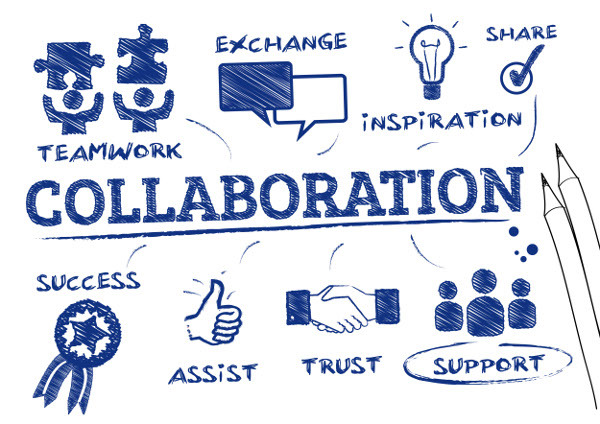e-Learning Ecologies MOOC’s Updates
Social and Collaboration Platforms and Spaces (Essential update #5)
Collaborative work produces collaborative intelligence. As Dr Kalantzis emphasized in the video ”collaborative intelligence very often as a consequence of the different inputs produces higher standards and depth of knowledge from the process of the different perspectives and the different experiences coming together.” These days, with the further development of web 2.0 we have many cloud-hosted Internet-based applications which give us even more ways to collaborate, form online communities and expand our interaction with each other. Jono Baker writes in his Six Degrees column ”In recent years, we have seen tremendous growth in communities around the world. Software development, hardware engineering, social activism, crowdsourcing, makers, education—thousands of communities are springing up to get together, have fun, and make a difference”.
These Social and collaboration platforms can help us create colloborative learning spaces and also handle large-scale projects, reduce expenses on office space and travel. As I was doing my research for this update i realized just how important these tools are also for me in my everyday work as e-Learning specialist and also in personal life.
According to "The Kiel Approach to Collaborative Systems" there are three viewpoints of collaboration - communication, coordination and coopration. These categories are often used to structure the variety of collaboration tools available.
Communication collaboration tools allow to exchange information between individuals. Communication is defined via exchange of messages and information or classically defined via services and protocols. Communication collaboration tools include Email, Instant messages, voip/video call. I often use tools like Skype or Google Hangouts in my meetings with subject matter experts, who are often living all over the country and have limited time to participate in these e-learning projects. In my free time i often use WhatsApp for discussion in groups like training buddies, family, school etc and FaceTime to call friends and relatives.
Coordination is specified via management of individuals, their activities and resources. It is the the dominating perspective of collaboration. The specification is based on the pre-/post-articulation of tasks and on the description management of tasks, objects, and time. Collaboration tools supporting coordination are the ones who allow you to set up group activities, schedules and deliverables. (online calendars, spreadsheets, time trackers). This is also a very important part of my work as i have to keep all the pieces in places and keep up with the schedule. Shared calendars and tools like Doodle are great in project management.
Cooperation is the production taking place on a shared space. It can be considered as the workflow or life case perspective. Cooperation tools (e.g. video conferencing, teleconferencing, SharePoint, Google docs, Scholar) allow groups to have real-time discussions and to shape an idea or thought together. We use a tool developed in our company for collaborating with our numerous subject matter experts and authors. They can sign in, edit documents, mark their tasks ready, comment and discuss. They can also review the ready e-learning content (SCORM) in the same space. This certainly helps teams to work efficient and is a great tool for project leader. But in my opinion it still is very important to have face-to-face meetings for getting to know each other and brainstorm the table of content. For some people working in these online collaboration spaces seems to be easy, but for some it doesn’t come so natural - they need face-to-face interaction to get things done.
"While we often think of the future of collaboration resting on the shoulders of technology, that is only part of the story. Sure, technology provides opportunities, but it’s important to view technology and social systems as partners. The promise of tomorrow’s collaboration requires actively considering, designing, and fine tuning both."
Mark Mortensen, ”Technology alone won’t solve our collaboration problems”, Harvard business review.
References and further reading:
Jono Baker, 10 top-notch community tools, Six Degrees column https://opensource.com/life/15/7/10-community-tools, retrieved 2016-11-04.
Thalheim, Bernhard. 3C = C3^3 = Communication + Coordination + Coordination The Kiel Approach to Collaborative Systems (PDF). Kiel: Christian-Albrechts-University Kiel, Department of Computer Science. p. 6.
Wikipedia: Collaboration tool
Mark Mortensen, ”Technology alone won’t solve our collaboration problems”, Harvard business review. Retrieved 2016-11-04.
Image from: http://www.paperlessproposal.com/3-great-online-business-collaboration-tools/



Thank you Kathy!
Excellent work!